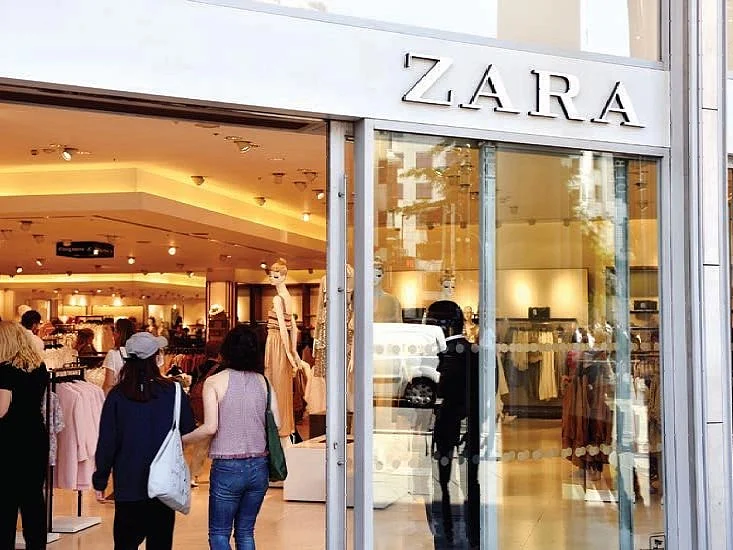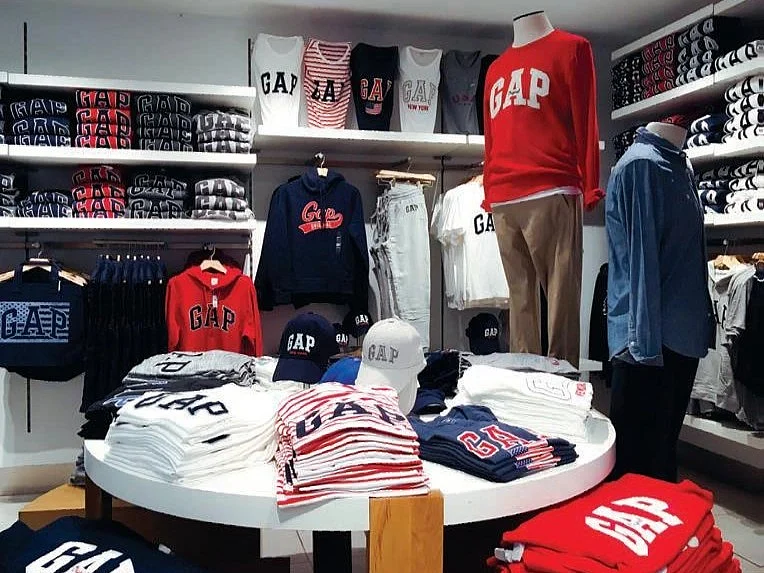Preloved in a postconsumer world
Could the nascent Indian thrift industry emerge as an alternative to the homogeneous high-street?

Thrift in the West has long been the domain of the cooler fashion set; the ones who effortlessly seem to find a pair of Vivienne Westwood gloves at the bottom of some scabby old box, and then magically add them to an ‘oh, this little thing?’ ensemble they insist on telling you cost ‘nothing at all’ but somehow looks like it was all purchased right off the runway.
Despite there being a sense that some of the best fashion representation over time has come from this antithesis to mainstream sartorial channels, the second-hand trend has only just begun catching on in India.
Some of the reasons feel obvious. Our high street or fast-fashion industry is nascent, so it seems natural that any reactive alternative to it would take its time. Sustainability activists, though, say that is the one thing we do not have—time.
Much like how our delayed response to green energy begs more years to ‘develop with coal’ first, this far too slow rejection of global high-street brands may cost us more than large chunks of our salaries.
The facts surrounding the industry are chilling. Recent images of Chile’s Atacama Desert show a vast heap, many kilometres wide, of unused, unsold clothing discarded from fashion brands across the world. An interviewee in Al Jazeera claims close to 60,000 tonnes of clothing arrive in the country each year. Wealthier nations across the Global South are paying more and more for the weekly changing trends in Zara outlets.
In Ghana, clothes arriving in the name of ‘charity’ form a 20-metre-high mountain. Fifteen million items of clothing arrive in Accra each week, almost half of which need to be junked immediately. The rest? Resold where possible or, as recent reports reveal, burnt for fire.
Most fast fashion contains some element of polyester, a non-biodegradable fibre, which when burnt or abandoned presents us with a highly toxic 200-year-plus problem. One Ghanian local told reporter Linton Besser they called the garments ‘obroni wawu’ or dead white man’s clothes.
The question of carbon footprints arises from the moment the fibre for a product goes into production. A single pair of jeans, for instance, costs the earth 7,500 litres of water. Then there are transportation costs. Are GAP clothes stitched in India and other Asian countries moved directly from factories to outlets in the same area, or do they travel to centralised warehouses in other countries and then back again?
The lack of transparency is as worrying as the lack of accountability. There is something particularly sickening about buying a dress in a mall in Kolkata that’s been created under appalling conditions a mere 300 kilometres away in Dhaka.
decade after the horrors of the Rana Plaza collapse in Dhaka—where over 1,100 garment workers lost their lives when a series of factories flouting already lax regulations collapsed—most consumers still ask no questions and over-shop remorselessly, supporting businesses that are shrouded in secrecy, studded with human rights violations, and interested only in driving profits at an unthinkable cost.
The truth is we do not need more clothing on this planet. A quick Google search on where to drop off clothes for charity in Kolkata, the city I live in, brings up Responsible Charity (RC), an NGO committed to ending poverty in one generation, through education. Hemley Gonzalez, founder, is the first to admit: the last thing they ‘need’ is clothing. Yet, clothes come in. Some of them are distributed in the slums where RC works, while the best items, often with labels on, are resold.

Some of the donated clothes are absolutely appalling, prompting the organisation to run a campaign recently with photographs of torn, stained and beyond-repair items in the hope of shaming the donors into thinking twice before making such ‘donations’. These include old dentures and even used underwear.
Hemley keeps the listing for clothing donations on their website as an effective means to get people to visit and see the work the charity does. But even in the slums of Kolkata, the one thing people do not need is clothing.
This was the thinking behind Kirti Poonia’s decision to launch Relove, an online space where stylish dressers could resell clothing from chic Indian brands to other stylish dressers. “Working in fashion, I realised how much pressure it’s creating on the earth’s resources,” she says. “My customers had so many unused garments.”
Kirti worked with her co-founder Prateek to create the technology that would simplify the process by embedding a resell button that gathers the data of the customer’s order history. That might sound intrusive to some, but it is the smartest way to make the process seamless. I tried it out myself.
When you register as a seller with Relove, the website spits up your purchase history and offers to resell those pieces for you. As of now, Kirti has 60 brands on board, including beloved names like Jodi Life, Suta, No Nasties, Chumbak, Saundh and The Summerhouse, and items have been flying off Relove’s e-shelves.

The trick to its success seems to be in letting the brand names lead (thus disallowing unbranded garments) and routing everything through Relove. This control is what appears to have prevented Relove from going the Etsy and Ebay way in India.
Meant for consumer-to-consumer use, those two platforms were quickly taken over by professional sellers pimping designer knock-offs, and very soon after launching, began to feel like ugly minefields to navigate. With Etsy in particular, being a space for the homemade and handcrafted, this feels tragic. Ironically, official branding, something second-hand site Ebay never had, seems to work wonders.
Smaller sellers on social media affirm this. Handles like @thrift_india, @lulu_thrift_ and @lovepurethrift on Instagram feature ‘drops’ where the sellers running the account upload between 10 and 20 items in one go, usually naming the brand in bold.
A hashtag that has caught on right alongside the #thriftindia one is #FFF (fastest finger first), the GenZ way of saying ‘first come first served’. Buyers simply post a comment or message the seller, pay via UPI and are shipped the item. Dresses, pants and even lingerie—@thriftwoo on Instagram is devoted to selling undergarments—go for as little as Rs. 399.
Though they call their wares ‘thrift’, many of these pages, often run by college students with an eye for trends, are selling brand new clothing acquired cheaply via factory-surplus markets.
Though Sarojini Nagar in Delhi is the largest and most famous one, most Indian cities have some small version of the same. Stall-owners buy surplus from garment factories by the kilogram and resell them to eager fashionistas on a budget.
Many of the best outfits of my broke 20s were found in the bylanes of these bazaars. Even then, there were rumours aplenty that large segments of the clothing, jeans in particular, were second-hand. Did that bother me? Not really.
What did bother me was that the same people who found this weird would return from summer holidays in America proudly showing off their cool ‘vintage finds’ rummaged from bins in second-hand stores abroad!
This attitude is exactly what Mridula Pai, head of one of the country’s first brick-and-mortar thrift spaces—the Kolkata-based store Love Me Twice—has had a hard time dealing with.
“In India, superstition and taboo are embedded. From spirits of the dead inhabiting the clothes they’ve left behind, to being of the opinion that all second-hand products are ‘unclean’ and that it’s a choice only for a certain class of people, [these] have been some of the deep misgivings that we have had to address.”
She points out the irony of hand-me-downs being an integral part of Indian family culture, but buying second-hand being surrounded by stigma. This might be the reason for popularising the term ‘preloved’, which feels gentler to some.
Caste too plays a role in these inherent ideas. While a shift in mindset has taken place when it comes to luxury goods, as testified by the success of sites like Pernia Qureshi’s Saritoria, Confidential Couture and plenty of others, it is the cheaper high-street goods that pose a real problem.
Mridula, who quit her job as creative head of a travel startup to turn a passion project into what she calls her “life’s work”, hopes that “as awareness spreads, things will change and thrift will be celebrated instead of being stigmatised”.
Love Me Twice has been conducting what she calls ‘Closet Cleanse’ events in cities across India to spread awareness and give shoppers a first-hand experience of second-hand shopping. “I’ve seen first-time thrifters be blown away by the surprise of stumbling upon unique pieces at low prices.”
But can these hopefuls convert fast-fashion shoppers?
The urge to overproduce and sell seems hard to ignore. A glance at one of India’s best-known thrift spaces, Bombay Closet Cleanse, will show you they too have begun hawking spanking new items of clothing under their own brand name—an angle that feels like it defeats the central purpose of thrift, which is to recycle and reject a homogenous, polluting, capitalist fashion economy.
Browsing social media, it’s hard not to notice how many are committed to never being seen in the same outfit twice. Certain influencers like Sanjana Rishi stand out for rejecting new purchases. Sanjana’s feed has become popular for her #ThriftedThursdays outfit listings.
Some are quick to point out that many of her best outfits were bought internationally, at the thrift stores of LA and elsewhere, but it’s a start. On the bright side, leading by example is how she keeps the conversation around second-hand alive.
So, what does the future hold? Shein, the fastest fashion giant on the planet, just had its most lucrative year yet. And yet, Google the words ‘no new clothes’ and hundreds of articles pop up. Many are pledges, while others are long descriptive accounts of rejecting high-street buying.
There is clearly a movement growing, and as a younger generation desperately aware of the consequences of over-consumption begins to earn, it will be interesting to see what they choose to spend on.
Pair thrift with the best of technology, and you have an option that has slowly begun to feel like it might actually win.
When I ask Mridula Pai if ‘preloved’ can realistically compete with high street, in a world where your regular Jane and John Doe wears an item of clothing no more than four times on average, she says, “It may seem impossible... very few thrift stores, if any, have the kind of muscle, investment or infrastructure big brands do. I do think what we’re seeing is a movement towards that shift though. At the moment, the thrifting sector is so disorganised, and people treat it as a hobby.
"I’m not blaming anyone, but homegrown thrift stores (including us) really need to level up to the experience of what high-street brands are offering. From curation to access, customer service and more. Maybe it’s time investors start looking at thrift as a business to consider funding, because according to reports it’s set to grow exponentially.”
As I write this, the internet is ablaze with controversy after a group of six influencers visited one of Shein’s 6,000 factories in China and posted glowing ‘reviews’ about it on their feeds. Interestingly, the backlash they experienced was so harsh, many chose to delete their posts. To me, this looks a lot like hope. Maybe someone should tell them to try thrifting instead.
(Karuna Ezara Parikh is a Kolkata-based author)
Follow us on: Facebook, Twitter, Google News, Instagram
Join our official telegram channel (@nationalherald) and stay updated with the latest headlines